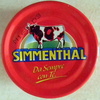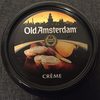E251 - Sodium nitrate
Functions: Preservative
Sodium nitrate is the chemical compound with the formula NaNO3. This alkali metal nitrate salt is also known as Chile saltpeter -because large deposits of this salt can be found in Chile- to distinguish it from ordinary saltpeter, potassium nitrate. The mineral form is also known as nitratine, nitratite or soda niter. Sodium nitrate is a white solid very soluble in water. It is a readily available source of the nitrate anion -NO3−-, which is useful in several reactions carried out on industrial scales for the production of fertilizers, pyrotechnics and smoke bombs, glass and pottery enamels, food preservatives -esp. meats-, and solid rocket propellant. It has been mined extensively for these purposes. - Wikipedia
EFSA evaluation: Re‐evaluation of sodium nitrate -E 251- and potassium nitrate -E 252- as food additives (2017/06/15)
To evaluate your exposure to the E251 - Sodium nitrate food additive, you can browse our list of products that contain it. See the list of
| Infants | Toddlers | Children | Adolescents | Adults | Elderly | |
|---|---|---|---|---|---|---|
| < 1 | 1 to 2 | 3 to 9 | 10 to 17 | 18 to 64 | 65+ | |
| High risk (50% of people or more) |  |  | ||||
| Moderate risk (5% of people or more) |  |  |  |  |  |  |
: Risk of reaching or exceeding the acceptable daily intake (ADI)
-
Gouda vieux - Holland Master - 200 g

-
Lasagne for 1 - Charlie Bigham's - 335g

-
Noordholland Meisterauslese Gouda - Meine Käsetheke - 125g

-
Old Amsterdam - Westland - 125 g

-
Lasagne for 2 - Charlie Bigham's - 690 g

-
Gouda jeune 48+ 7 tranches - Molenland - 300 g

-
Tesco Finest dry cured bacon - 240g

-
Guacamole - Tables du Monde - 300 g

-
Snack Day - 300g

-
Des de gouda et mimolette - Chêne d'Argent - 150 g

-
Gouda Holland middle age at least 16 weeks matured - Milbona - 450 g

-
Queso Gouda - Milbona - 200g

-
Plat préparé de viandes bovines en gelée végétale - Kraft - 140g

-
Gouda Holland Jeune - Carrefour - 300 g (6 x 50 g)

-
Gouda affiné - Milbona - 300 g

-
Mimolette Française - Isigny Ste Mère - 150 g

-
Dés de gouda au cumin 30% Mat. Gr. - Les Croisés - 150 g

-
Bold & Zesty Pretzels - Clancy's - 336 g

-
Salade Coffret Jambon Speck, 320g - Mix Buffet - 320 g

-
Smoked Bacon Lardons - Tesco - 2 x 100 g
-
BRESAOLA COOP

-
Grated Gouda - Milbona - 250g

-
Coffret Salade - Select & Go - 320 g

-
Ziegenkäse Bockshornklee - Alpenmark - 125g

-
Ham slices air dried with Cornish sea salt - Sainsbury's - 120g

-
Oak Smoked Dry Cured Streaky Bacon Rashers - Sainsbury's - 220 g

-
Gouda jung gerieben - Milbona - 250 g

-
Dry Cured Outdoor Bred British Bacon Rashers - Taste the Difference - 220 g

-
Brugge Vieux - Oud Brugge Vieux - 220 g

-
Original - Peperami - 22.5g
-
Käse Old Amsterdam - Westland - 145g

-
Speck - Corte Del Gusto

-
Queso Havarti - jermi - 200 g

-
Mimolette Demie Vieille Au Lait Pasteurisé, 27%MG - Isigny Ste-Mere

-
Chicken treble - Tesco

-
Gouda Holland - Carrefour - 300 g

-
Dés de GOUDA AU CUMIN - Carrefour - 150 g

-
Tortilla Rolls - El Tequito - 125 g

-
Gouda holland IGP - Pâturages - 250 g

-
Salsa queso - Hacendado - 300g

-
Cooked chicken breast slices - Aldi - 150 g

-
Dès de jambon -25% sel - Carrefour - 150 g

-
Gouda Jeune - Delhaize - 500 g e

-
Pizza Tirolese - L'italie Des Pizzas - 550 g

-
Old Amsterdam - 250 g
-
Gouda Holland jeune - Sans marque - 220g

-
Sausage - Baroni

-
Gouda - Les Croisés - 250 g

-
Mimolette vieille - Saveurs de nos Régions - 200 gr

-
mimolette - Pâturages - 200 g

-
Gouda Light Carrefour, Käse - 200 g

-
Gouda holland - Milbona - 400 g
-
Mittelalter Gouda Holland - Gut & Günstig - 300 g

-
Mimolette vieille - Nos regions ont du talent - 200 g

-
Ziegenkäse Kräuter - Alpenmark - 125 g

-
Gouda au lait pasteurisé 30%MG - U - 250 g

-
Jamon de Pavo Virginia - FUD - 290 g

-
Viande de bœuf séchée x 10 tranches - SAINT AZAY - 80 g

-
Gouda - Aldi - 280 g

-
Galettes œuf jambon emmental - Agis - 300g (2x150g)

-
Gouda - Gutes Land - 200 g

-
Ziegenkäse Schnittkäse mit Bockshornklee - Milbona - 125 g

-
6 Fagots de haricots verts - Picard - 270 g e

-
Jambon cru fumé Speck - Itinéraire des saveurs - 100 g

-
Hähnchen Cordon Bleu - Culinea - 500g

-
Mini Crêpes fourrées Mozzarella & saveur Bacon - Crusti Croc - 80 g

-
Gouda jeune OudenDijk - delhaize - 250 g

-
Old Amsterdam Jung & Mild - Westland - 165 g

-
Gouda Mi-vieux - Molenland
-
Gouda moutarde et Fénugrec - Bistro Mix - 175 g

-
Gouda Holland - Carrefour - 290 g

-
Gouda Holland - Carrefour - 300 g

-
Sandwich Käse & Rucola Creme - Leerdammer - 170 g

-
Old Amsterdam crème - 125 g

-
Frisch & Käse - Original - Old Amsterdam - 125 g

-
Nordholland Premium Gouda mittelalt - Molenland - 285 g

-
Sambal - Delhaize - 150 g

-
Salade César - Delhaize - 270 g

-
Induveca, Salami Super Especial - Cibao Meat Products Inc.
-
Véritable andouillette de Troyes - Nos Régions ont du talent - 300 g (2 × 150 g)

-
Gouda - Le Cavalier - 450 g

-
Gouda Holland mittelalt - Rewe - 375g

-
ZWAN Premium - 250 g

-
Mini Choux saveur Fromage de Chèvre - - 70 g

-
Gouda Holland mittelalt - Rewe Beste Wahl - 175 g

-
Oud Brugge vieux - 200 g e

-
Cuidate-t+ - FUD - 250 g

-
Salade Speck - Carrefour - 320 g e

-
Salade et apéro - Pâturages - 150 g

-
Oldenburg Amsterdam - Old Amsterdam - 1pcs

-
Petites crêpes fourrées Goût bacon - Carrefour - 65 g

-
Gouda jeune tranches - Milbona - 400 g

-
Gouda affiné râpé - Holland Master - 150 g

-
Mini crêpes fourrées goût bacon - U - 65 g

-
Viande de boeuf séchée dans les Alpes 10 tranches - Casino - 70 g

-
Mimolette Extra vielle Cassante - César Losfeld - 200 g

-
Snack day

-
Jong 30 kaas - Milner - 175g

-
Crackers Gouda et graines (Lin, sésame, citrouille & tournesol) - Monoprix - 65g

-
Deliziosa Speciale - Trattoria Alfredo - 660 g (2 * 330 g)

